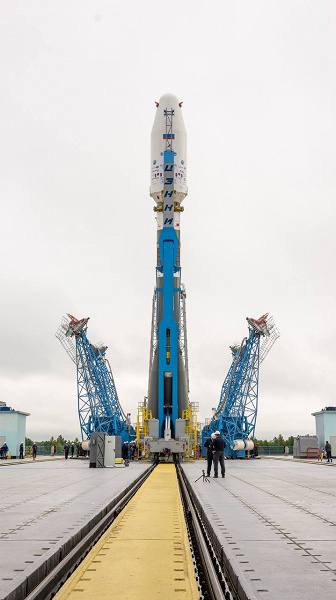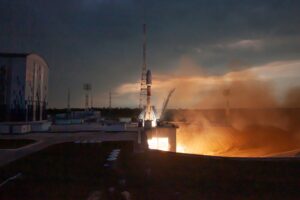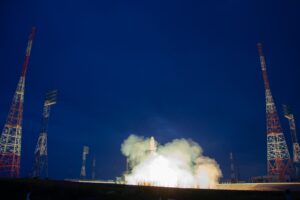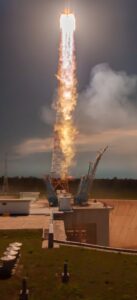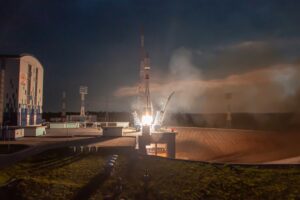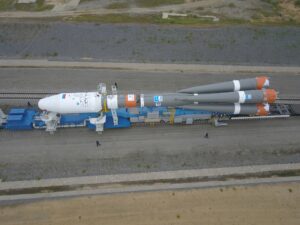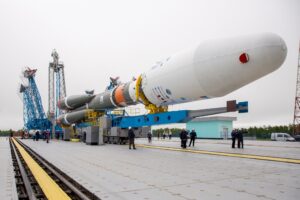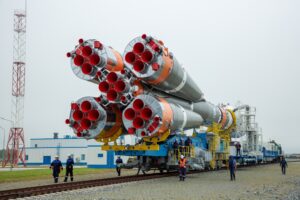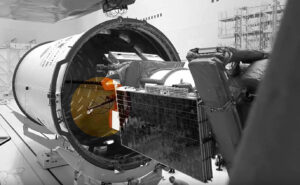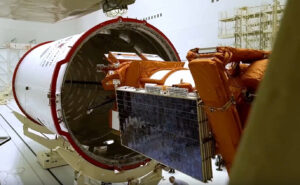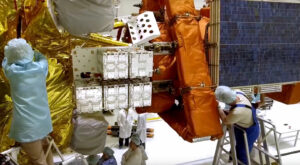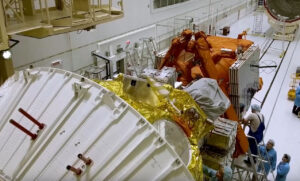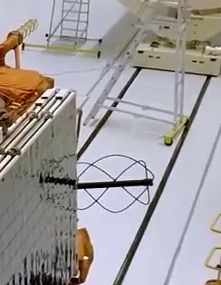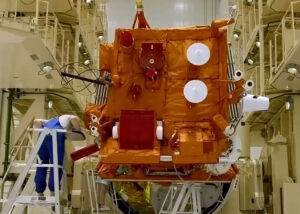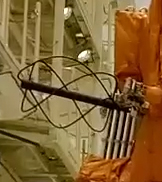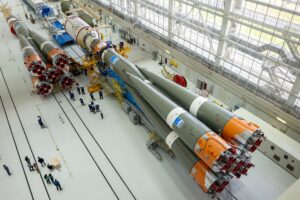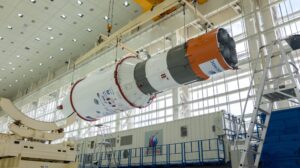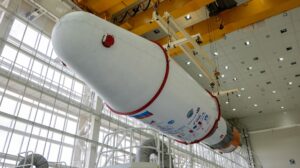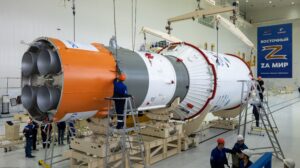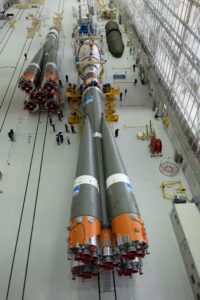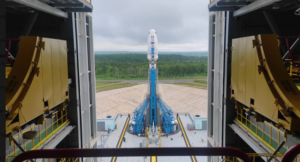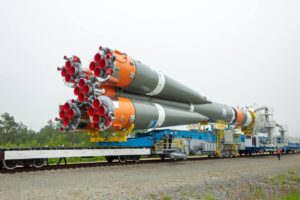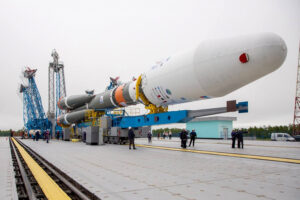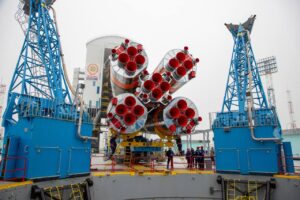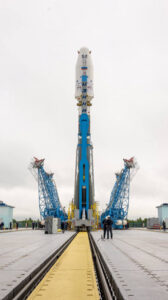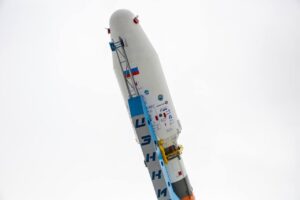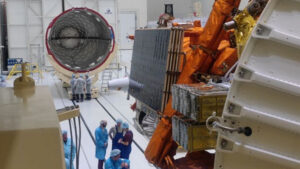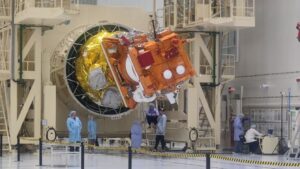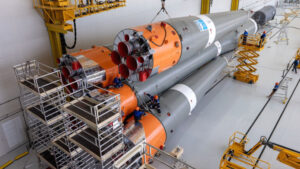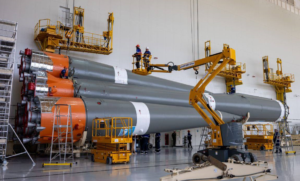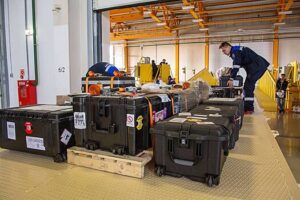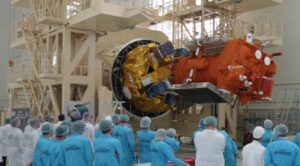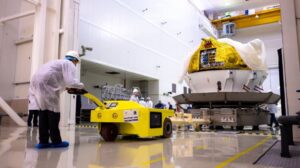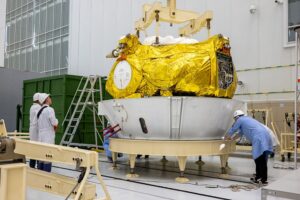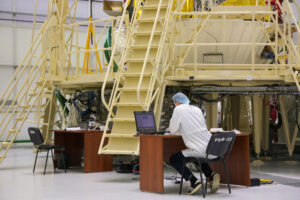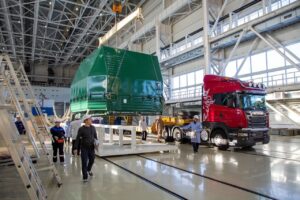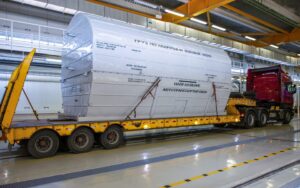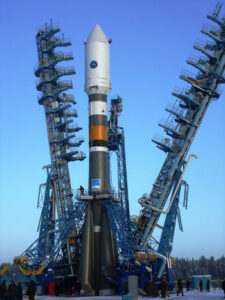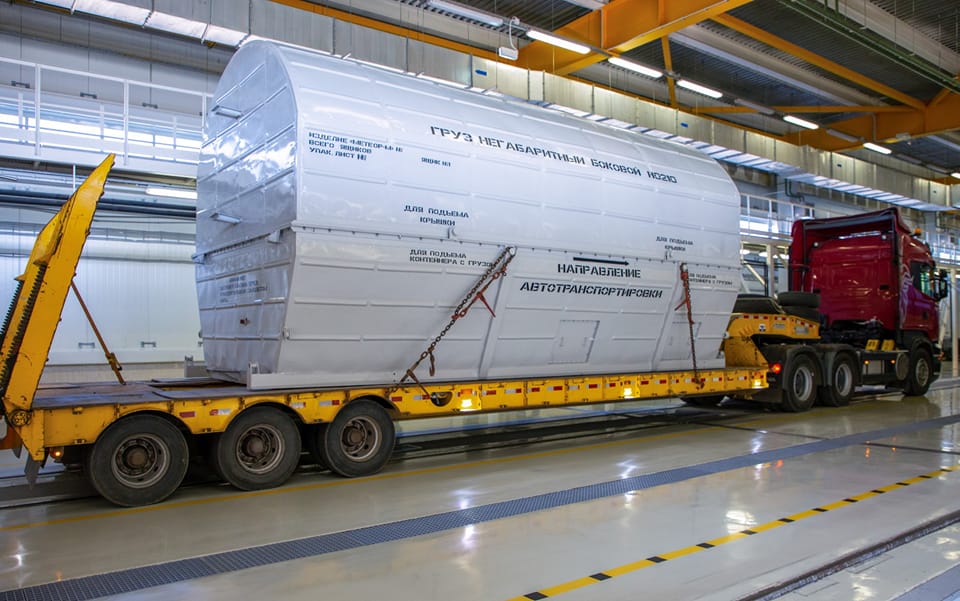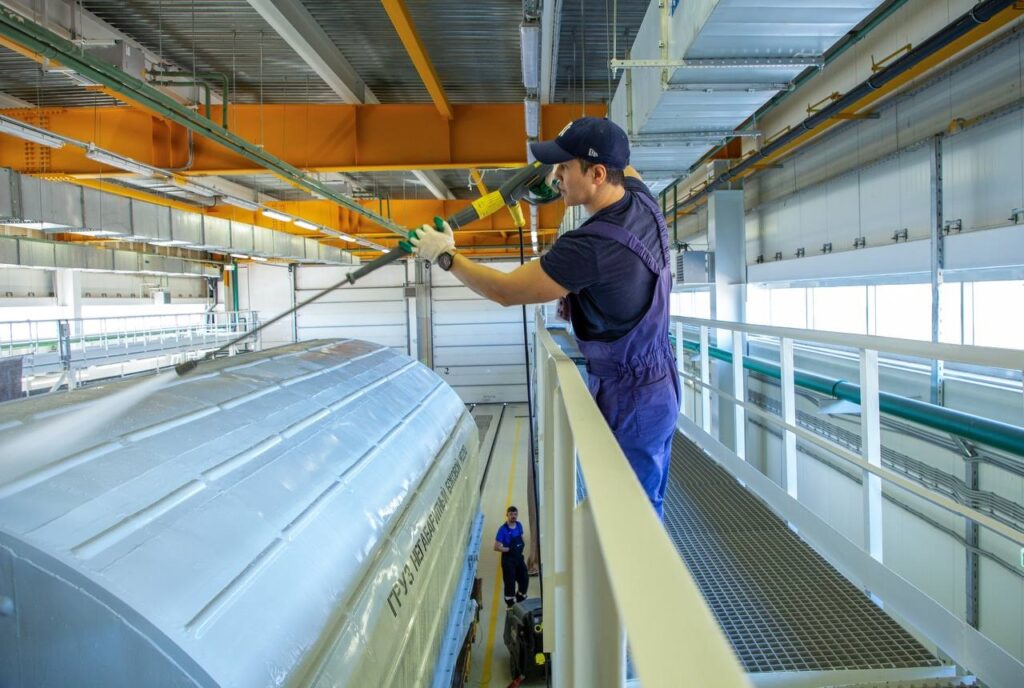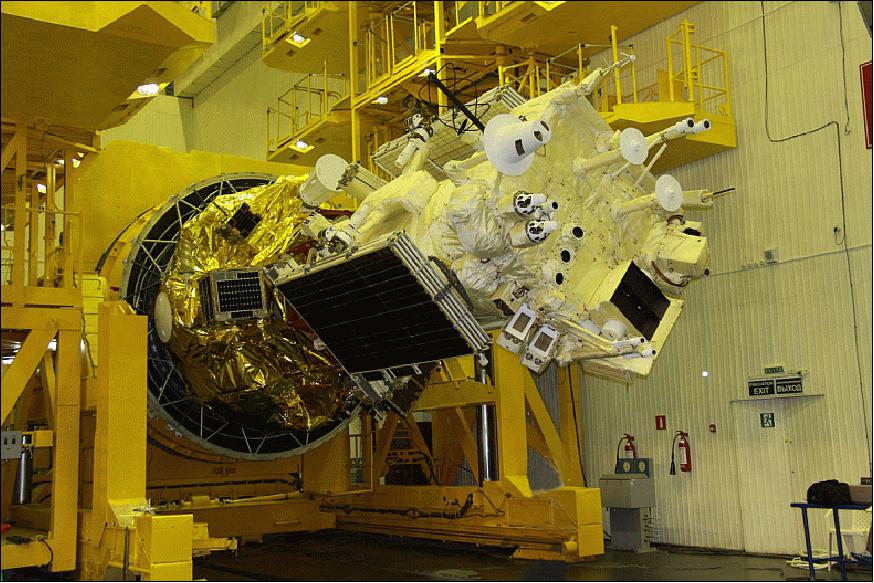UPDATE 06-24-2023
METEOR M-2-3 (Роскосмос Метеоре-М № 2-3) Launch Successful

All four side engines of the of the rocket were found on the territory of the Zeya district of the Amur region. All engine blocks landed in a heap in the vicinity of the center of the designated fall area. Eight fragments of the second stage were found in the area where the second stage fell on the territory of the Republic of Sakha (Yakutia). All fragments fell within the boundaries of the fall area.
Receiving Meteor M2-3
I have posted my receiving information for Meteor М № 2-3 Here https://usradioguy.com/meteor-m2-3/
The Soyuz-2.1b rocket has been fully integrated with its payload and will launch 43 spacecraft into orbit: the main satellite is the Meteor-M No. 2-3 meteorological satellite and the remaining 42 as a variety of scientific and university satellites. The rocket traveled more than a thousand kilometers by rail from Samara and, after final assembly and testing at Vostochny, was installed on the launch site of the cosmodrome. The rocket has already been set in a vertical position, the launch will take place from Vostochny on June 27 at 14:34:49 Moscow time.
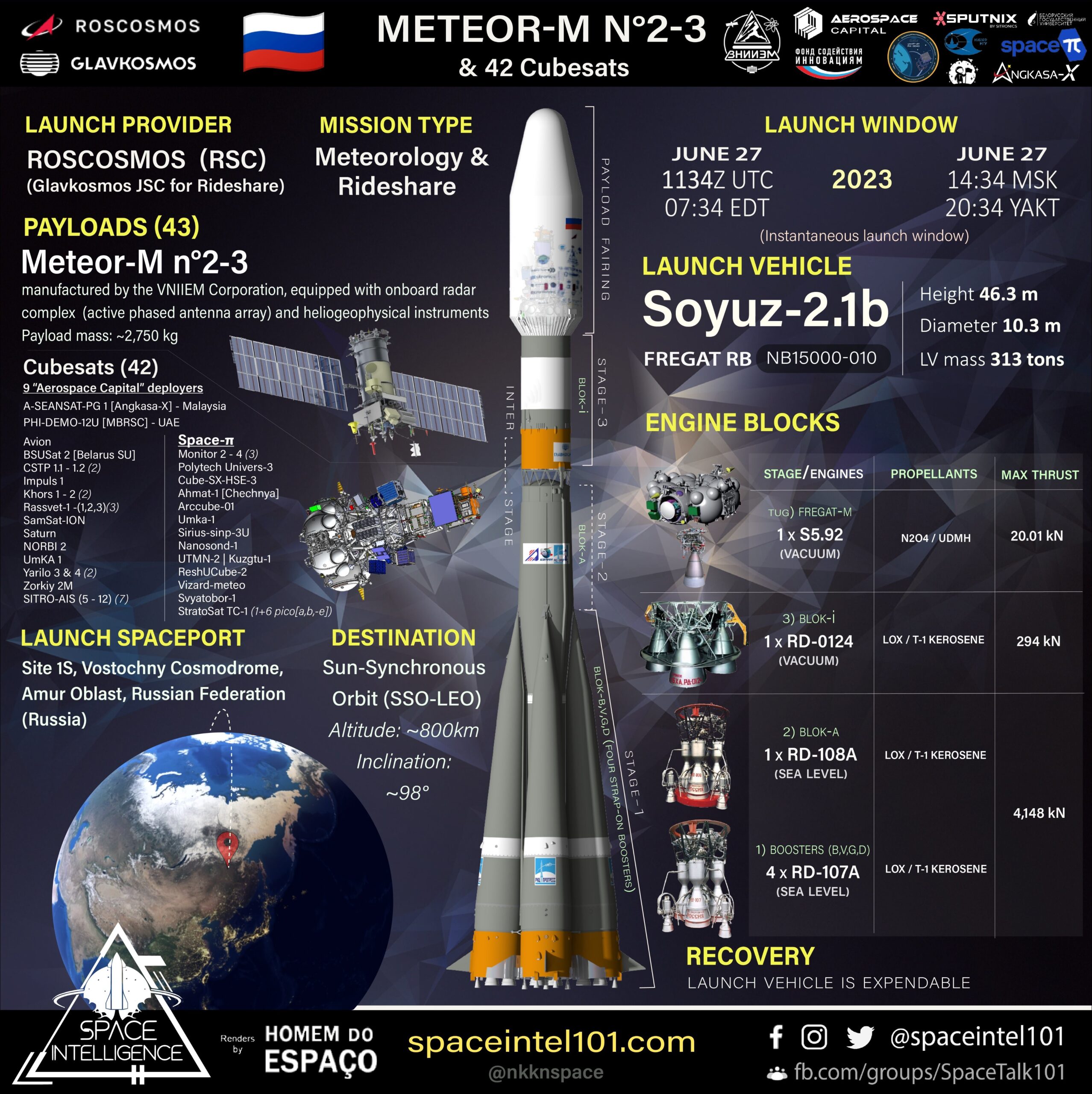
Images from Roscosmos. Notice the detail shots showing the 137 MHz QFH antenna, looks exactly like the receiving antenna I use for NOAA and Meteor APT
CURRENT LAUNCH PROJECTION
Tue • Jun 27th, 2023
11:34 AM UTC
UPDATE 06-20-2023
Meteor M No. 2-3 has a launch date set, June 27th, 2023.
At the Vostochny Cosmodrome, the assembly of the payload fairing for the Soyuz-2.1b launch vehicle was completed on June 20th, 2023. In the vehicle assembly and test building of the cosmodrome, the fairing was rolled out and Meteor M No. 2-3 and the additional 42 small sats were mounted. Electrical, fuel and pressure tests were carried out successfully. The satellites, encapsulated within the payload fairing is scheduled to be transported to the Soyuz-2.1b for final vehicle assembly.
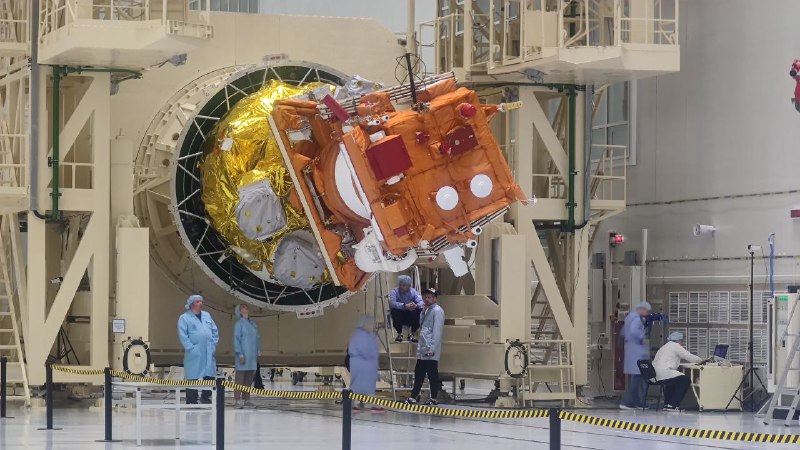
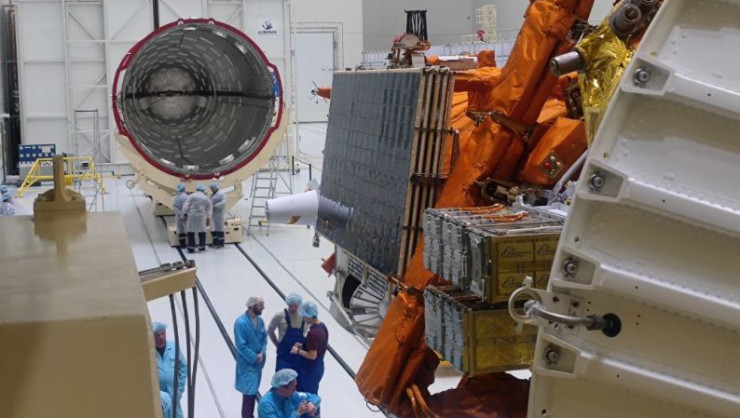
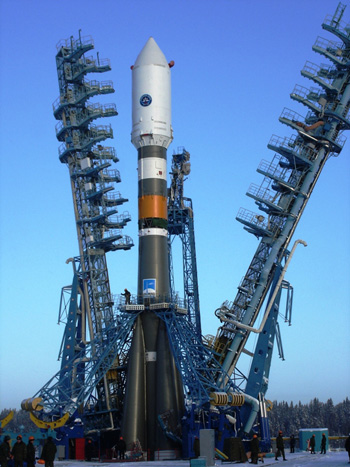
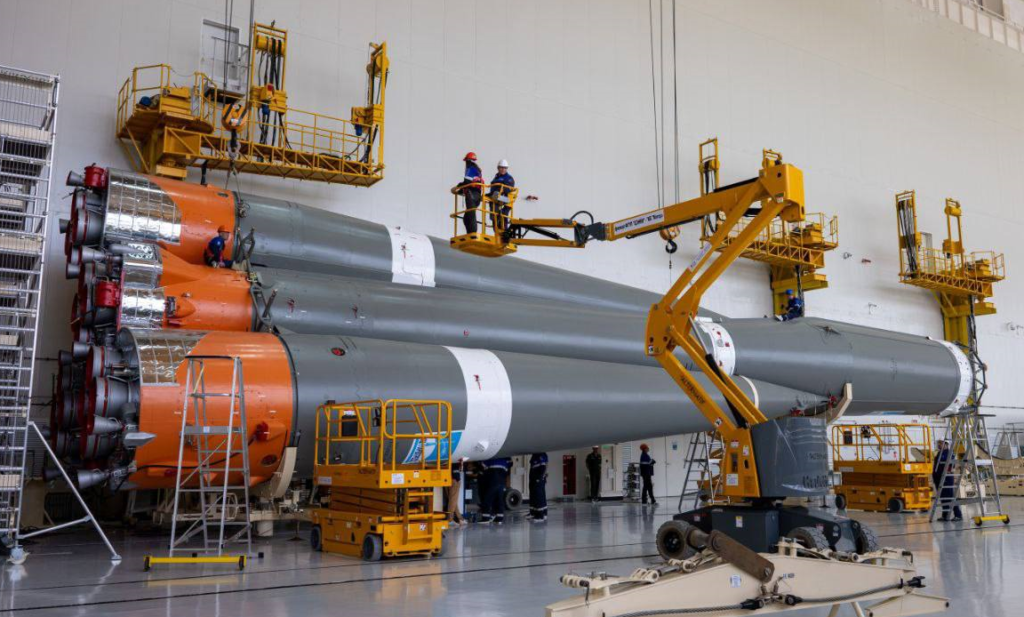
Soyuz-2.1b will soon launch from the cosmodrome in the Amur Region with the Meteor-M hydrometeorological satellite No. 2-3 and 42 small spacecraft. Now the Soyuz-2 launch complex is preparing the rocket to be moved to the launch pad. The first and second stages are being assembled into a “package”, and work is underway with the M No. 2-3 satellite and 42 additional smallsats for mounting in the rocket nose fairing.
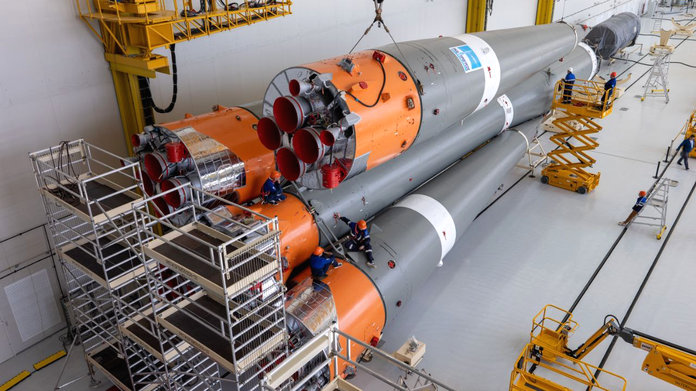
The work is carried out by specialists of the Vostochny Space Center (a branch of the Center for the Operation of Ground-Based Space Infrastructure) On the mobile service tower and the service cabin, from where the rocket is prepared for launch, the equipment providing access to hatches, electric-pneumatic connectors and rocket refueling equipment is being inspected and checked.
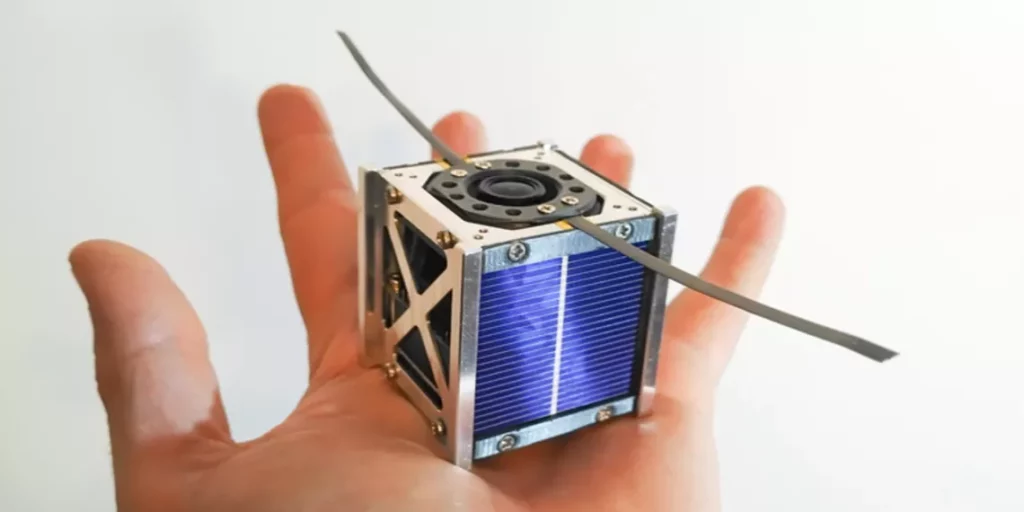
UPDATE 6-11-2023
Roscosmos to Launch Over 40 Small Satellites with Meteor-M Spacecraft from Vostochny
Roscosmos announced on Thursday that the Meteor-M No. 2-3 hydrometeorological satellite will be launched from the Vostochny Cosmodrome, carrying a payload of 42 Russian and foreign small spacecraft.
The report states, “42 small spacecraft have been transported to the Vostochny cosmodrome, where they will be launched in conjunction with the Meteor-M No. 2-3 hydrometeorological satellite.”
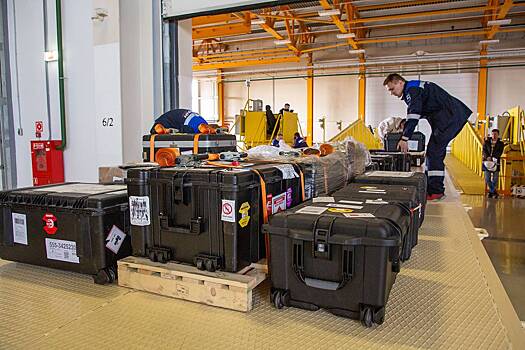
UPDATE as of 06/12/2023, the next Meteor, Meteor-M No.2-4 aboard Soyuz 2.1a/Fregat-M listed as launching in December 2023
Developers and manufacturers of the satellites, with the assistance of Roscosmos enterprises, will commence the necessary preparations for their launch aboard the Soyuz-2.1b launch vehicle, utilizing the Fregat upper stage.
Roscosmos further revealed that 17 of the small spacecraft are intended to serve the interests of both Russian and foreign commercial customers.
“Through an agreement between Glavkosmos and the Innovation Promotion Fund, the Planet Duty Program will launch 16 university educational cubesats as part of the Space-Pi project. Additionally, under the Roscosmos program for the launch of small spacecraft for educational and scientific purposes, Universat will launch nine satellites,” the state corporation explained.
UPDATE 05-30-2023
Refueling of Fregat Upper Stage for Meteor-M 2-3 Launch Completed
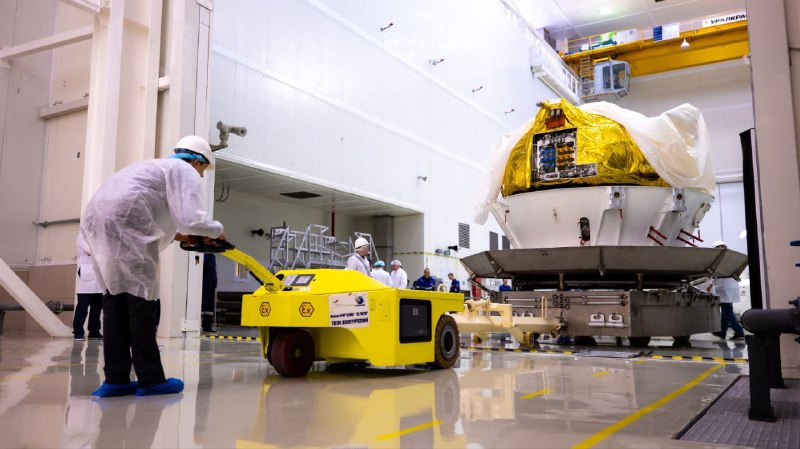
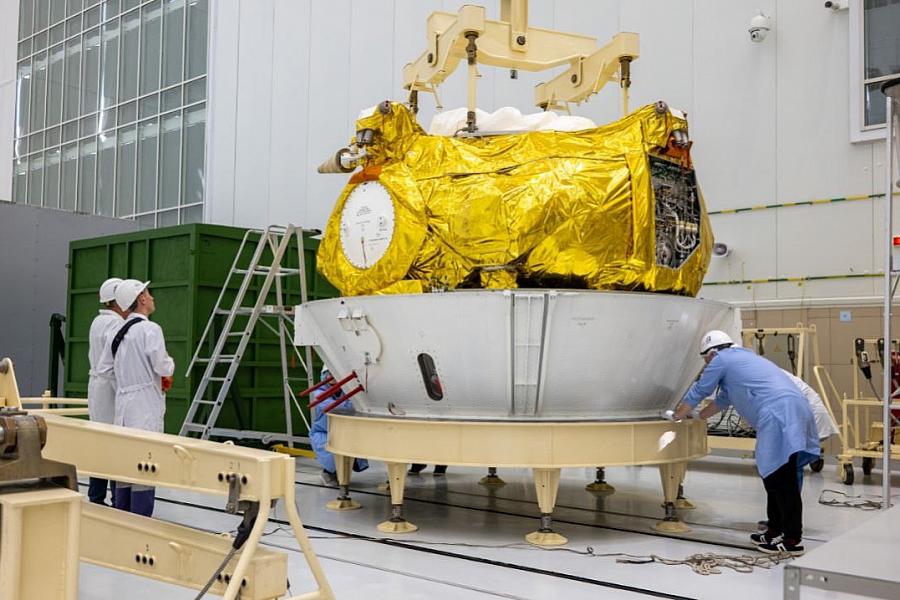
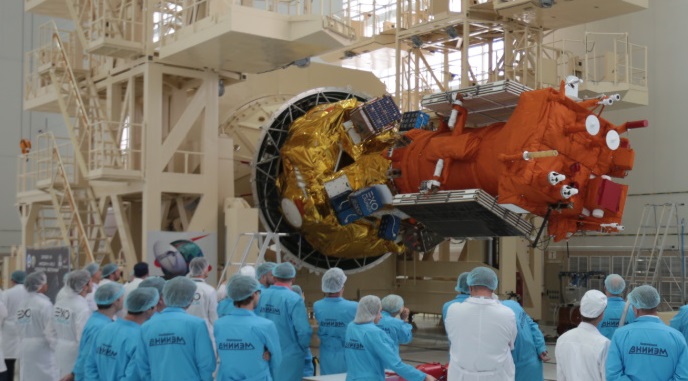
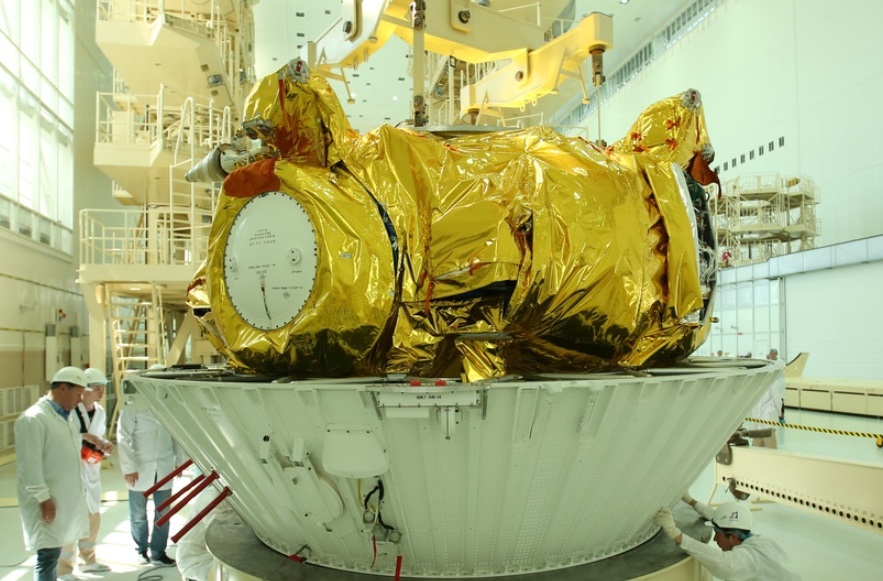
May 30, 2023
The refueling of the Fregat upper stage for the launch of the Meteor-M spacecraft No. 2-3 was completed on May 29 at the filling and neutralization station of the Vostochny Cosmodrome. The work was carried out by employees of the TsENKI branch – Vostochny CC, as well as specialists from other Roscosmos enterprises.
The Fregat upper stage is a universal upper stage that is designed to launch spacecraft into various orbits. It is used as part of various types of launch vehicles, including Soyuz-type launch vehicles. The Fregat upper stage was designed and produced by the Scientific and Production Agency named after S.A. Lavochkin.
The Meteor-M spacecraft is a weather satellite that is designed to provide global observations of the Earth’s atmosphere and oceans. The spacecraft is equipped with a variety of instruments that can be used to monitor weather patterns, climate change, and other environmental phenomena.
This time Roscosmos did not announce a launch date (previously announced as June 27th.) However, my sources in the Russian space tourism industry, revealed that travel agencies are recruiting groups for trips to Vostochny on June 27 and July 13.
The spacecraft will be launched from the Vostochny Cosmodrome using a Soyuz-2-1v rocket.
UPDATE 05-12-2023
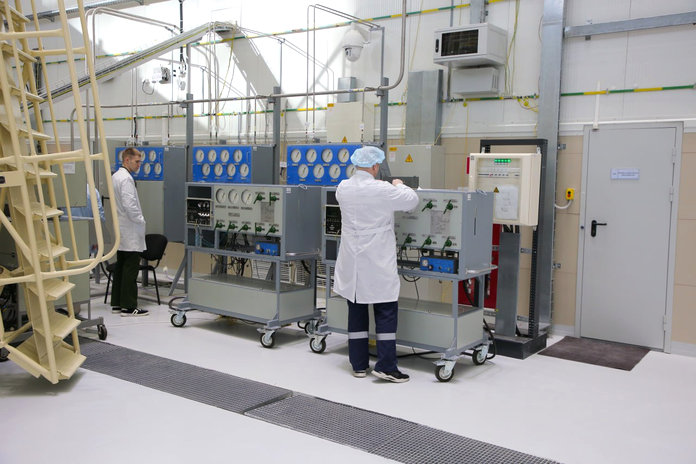
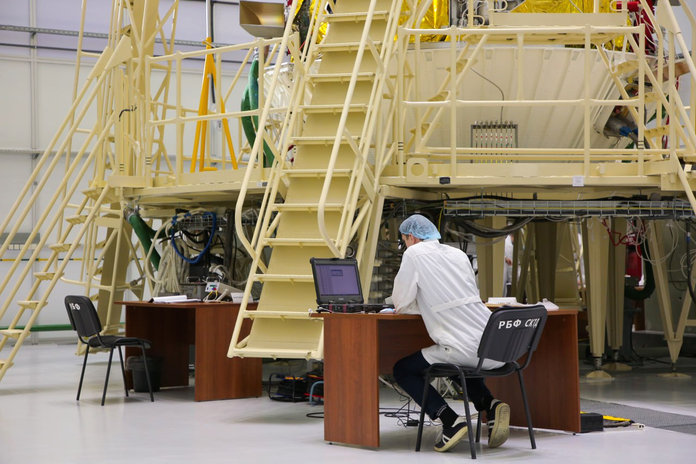
All images in this article courtesy of Роскосмос (Roscosmos)
Vacuum tests of the upper stage of the “Fregat” are being carried out to launch the meteorological satellite “Meteor-M” No. 2-3 into orbit from the Vostochny Cosmodrome. The test are conducted by specialists from the Vostochny Space Center (a branch of the Center for the Operation of Ground-Based Space Infrastructure) and the Scientific and Production Association named after S.A. Lavochkin (part of the Roscosmos State Corporation). Next will be the electrical and final checks of the upper stage and installation on the rocket. Then the “Fregat” will be sent to the refueling station.
UPDATE 05-07-2023
Meteor-M № 2-3 has been delivered to the Vostochny Cosmodrome for installation in the aero shell along with other sats that are hitching a ride. Compared to Meteor-M No. 2-2, the new satellite is equipped with an onboard radar system based on an active phased antenna array and heliogeophysical instruments (a short-wave reflected radiation meter and a radio frequency mass spectrometer). This will ensure all-weather radar monitoring of the Northern Sea Route and expand the range of controlled heliogeophysical parameters.
UPDATE 04-18-2023
The latest update from the Vostochny Cosmodrome and their Launch Schedule for Meteor-M No.2-3 aboard the Soyuz 2.1b has again been delayed to June 28th 2023, but at least a date was given but with no launch time specified. If and when it launches it will be from Cosmodrome Site 1S at the Vostochny Cosmodrome, Siberia, Russian Federation. This launch will use the Soyuz-2.1b launch system. Meteor-M n°2-3 will not be the only spacecraft deployed to orbit, many other sats will be deployed as well. Many of these are small ‘Cube Sats’ and/or “Nano Sats’. Two sats, Yarilo n°3 andYarilo n°4 are solar research microsats and will be scattered by solar sails. Interestingly they will be transmitting on 433 Mhz. Other piggyback payloads are listed below and range from research to communications satellites. Monitor-2 is another variant of the Monitor-E satellite program and looks to be an earth-observing satellite.
The Mohammed Bin Rashid Space Centre (MBRSC) has announced the first mission of the Payload Hosting Initiative – PHI-Demo. Earmarked for lift-off on the 27th of June at 3:34 pm UAE time, the program’s maiden mission, PHI-Demo, is set to ascend the skies from Russia’s Vostochny Cosmodrome aboard the Soyuz-2 rocket.
This pioneering initiative, jointly led by MBRSC and the United Nations Office for Outer Space Affairs (UNOOSA), is at the forefront of global collaborations, providing space access and hastening the sustainable progression of novel space technologies. The program’s design provides a cost-efficient and practical pathway for the first-time assessment of emerging space technologies in their true operational environment – in space.
Following rigorous environmental and flight review assessments, the state-of-the-art 12U modular satellite platform is primed for launch, carrying two partner technology payloads onboard.
- IoT Communication Payload: The advanced IoT communication payload is engineered by OQ Technology, a UAE-based start-up under MBRSC’s Space Ventures initiative. It enables the storage and forwarding of data collected from IoT devices in remote areas, industries, and autonomous vehicles, utilizing state-of-the-art 5G technology.
- Green and Safe Propulsion Subsystem: The satellite platform incorporates a revolutionary green propulsion subsystem developed by SteamJet from the United Kingdom. This subsystem employs water as the primary propellant, ensuring a sustainable and environmentally friendly approach to space propulsion.
Meteor-M n°2-3
Avion Kalouga 650
Drouzhba ATURK
KouzGTU-1
Monitor-2
Nanozond-1
Norbi-2
StratoSat-TK1
TinySat (x6)
UmKA-1
Yarilo n°3
Yarilo n°4
ArcCube-01
ASRTU-1
сubeSat 3U TchGU
SamSat-ION
Sviatobor-1
TioumSat-2
Biouro 1440
MKA MFTI
Zorki-2M
AIS (x8)
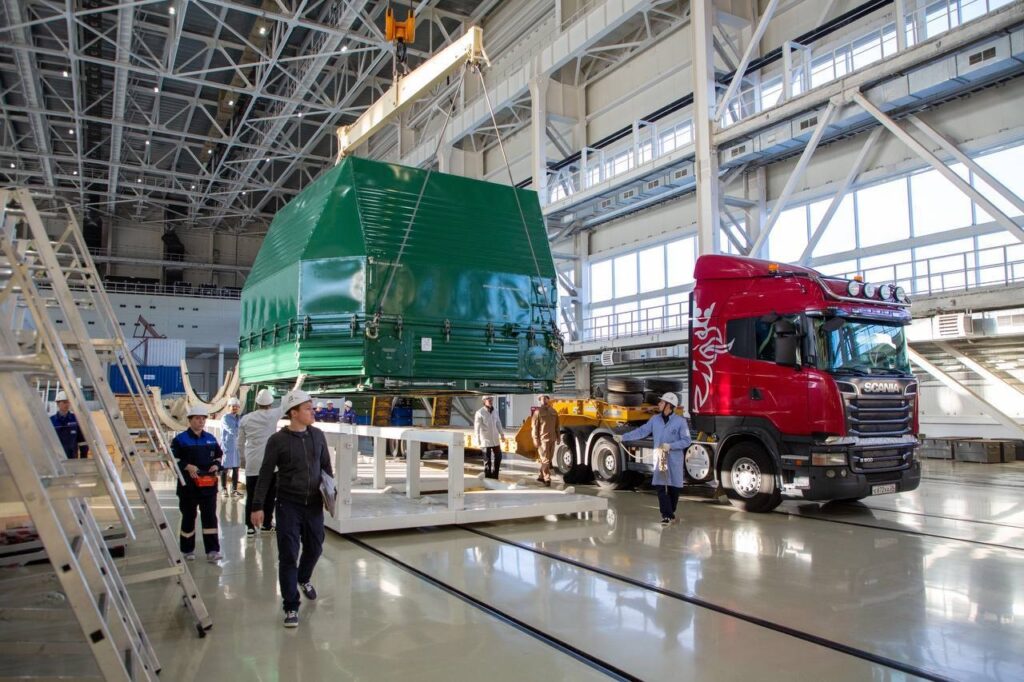

Upper-stage Fregat was delivered to Vostochny cosmodrome in February to launch the meteorological satellite Meteor-M No. 2-3

The long history of the Meteor M 2-3 delays
The Russian Meteor Satellite program, which aims to monitor weather patterns and provide accurate climate data, has experienced significant delays. This program was initially launched in 2014, and since then, it has been plagued by technical issues and bureaucratic obstacles.
The Meteor Satellite program has faced several setbacks, including launch failures and software malfunctions. In November 2017, a launch of a Meteor-M satellite failed due to a programming error, resulting in the loss of the satellite and several secondary payloads. In addition to technical problems, the program has also been affected by funding issues and bureaucratic red tape.
The delays in the Meteor Satellite program have caused concern among scientists and meteorologists who rely on the data provided by these satellites to make accurate weather predictions. This delay has also affected Russia’s ability to provide climate data to the international community and participate in global climate research initiatives.
By the middle of 2020, the launch of Meteor M2-3 shifted to the end of 2021, Meteor-M2-4 to early 2022 and Meteor-M2-5 to the first half of 2023. Then Roscosmos changed the launch of Meteor M2-3 to 2023, possibly in February 2023, then March os 2023, then June, and as of 04-18-2023, a date of June 28th has been set.. But, Russia is not very transparent with the launch schedule of unmanned rockets. And they have an obligation first for manned flights. Interestingly enough in my search for information, I contacted a private space tourist company that offers ground tours for rocket launch viewing in Russia, they could not give me a date for the Fregat Launch of Meteor M2-3, just telling me, “it will launch when the rubles say it will”.
Rossiya Segodnya Press stated in an article in August 2022, “Spacecraft numbered 3 and 4 should be launched in 2023, the fifth – in 2024, and the sixth – in 2025. Next, launches of new-generation Meteor-MP spacecraft should begin.” (The new MP spacecraft will not have LRPT)
Russian officials promised to orbit as many as four Meteor-M satellites by 2015, but these plans have been delayed by years. Meteor-M No. 2-3 satellite, which was custom-designed to observe oceans with a high-resolution phased-array radar has been in storage since 2016.
Meteor Satellite No. 2-4
The Meteor Satellite No. 2-4, is scheduled to launch at the end of this year. Meteor No. 2-5 and No. 2-6 are already in production. In the future, they will also replace in orbit the devices that are approaching the end of their active life. “That is, the series replace those devices that were launched earlier”
